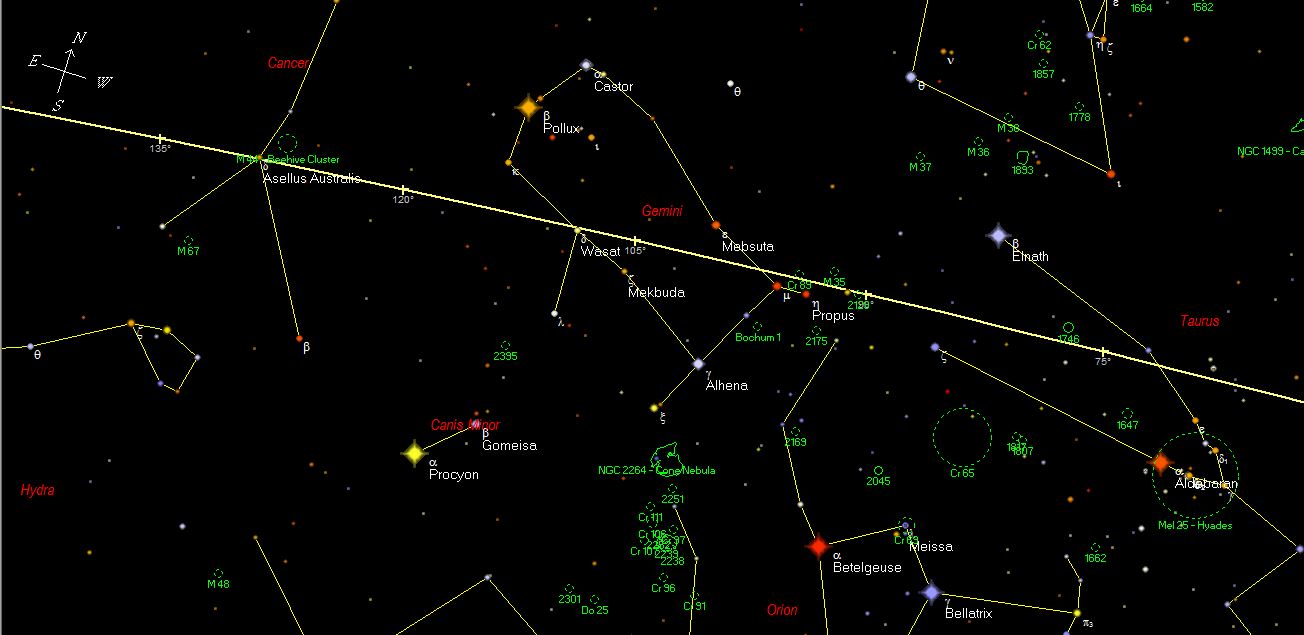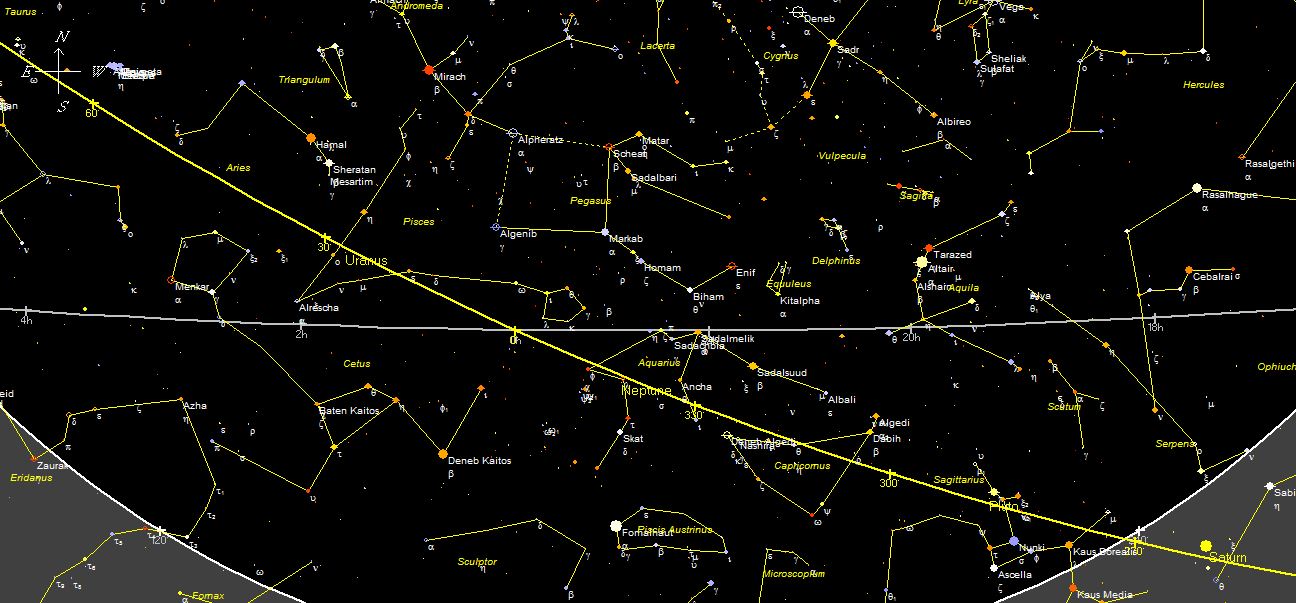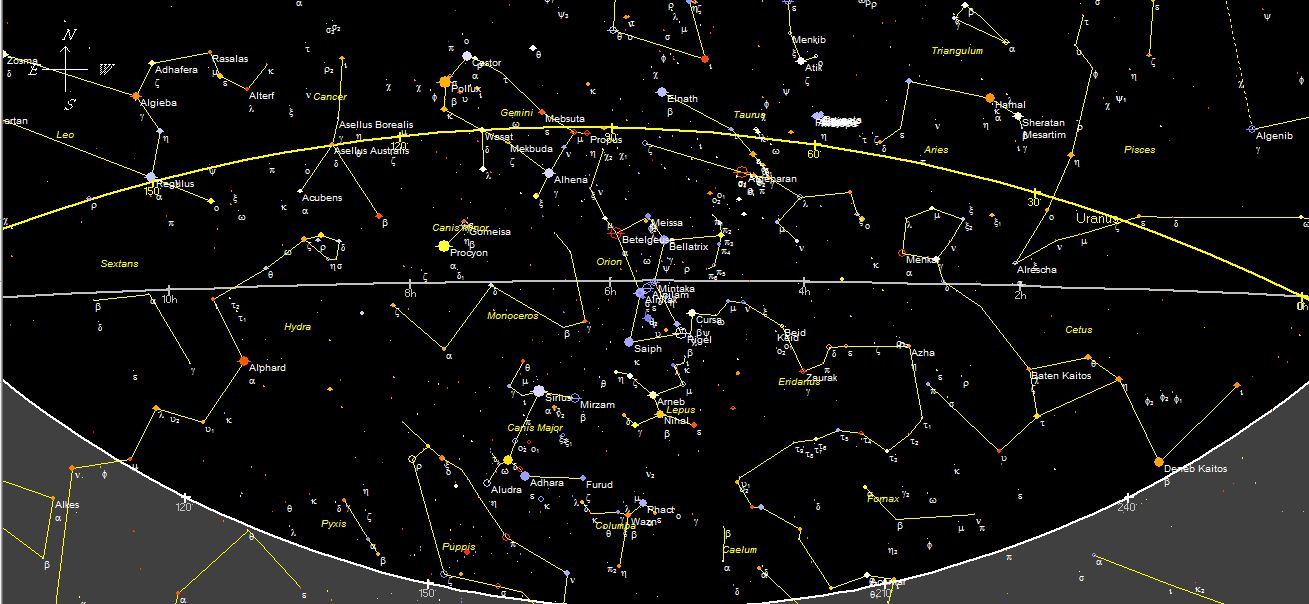
Around January 3rd, the Earth is in Perieli, that is at the point closest to the Sun of the Earth’s orbit, which, evidently, does not coincide with that of the Winter Solstice; during these days there is the maximum of the meteoric swarm of the Quadrantids that take their name from the homonymous constellation located between the two Bears, the Dragon and Boote, eliminated in 1928 by astronomers from the official catalog of the current 88 constellations.
You can see the 4 beautiful winter sketches: Aldebaran del Toro, Rigel di Orione, Sirio del Cane maggiore and Betelgeuse di Orione.
The Sun in Sagittarius goes to Capricorn around the 19th of the month. Facing South in the evening, we see the constellation of Pisces set to the west, followed by Aries, Taurus, Gemini, Cancer and Leo to the east. Orion is still in its full splendor all night long. In the course of the night new constellations arise in the East: Virgo, Libra, Scorpio, Ophiuchus up to the constellation where the Sun is located, which illuminates the day, pushing towards the West those on the opposite side.
The Taurus with the Iadi and the Pleiades
Taurus is the constellation through which the Sun transits from mid-May to the end of June. Located north of Orione is full of interesting objects. It is identified by the triangle of stars, the Iadi, which represent the face of the bull, west of Aldebaran; other stars draw two horns anteriorly and the body behind.
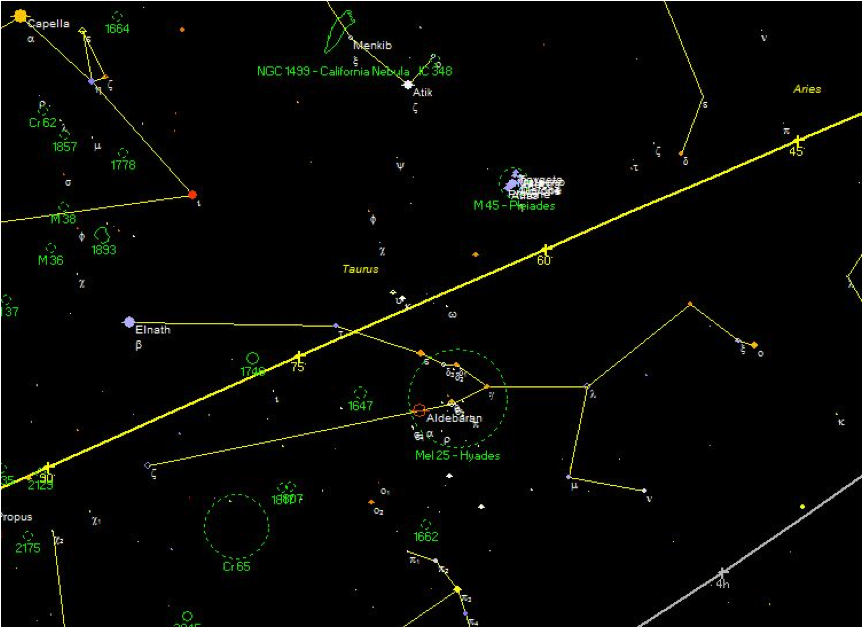
The most shining star, Aldebaran, which represents the red eye of the bull, means in Arabic the one following the Pleiades; it is an orange giant that with its magnitude 0.75 places itself at the thirteenth place among the stars in order of brightness; it is located at 65 a.l. from us.
The constellation hosts two open clusters: the Iadi and the Pleiades.
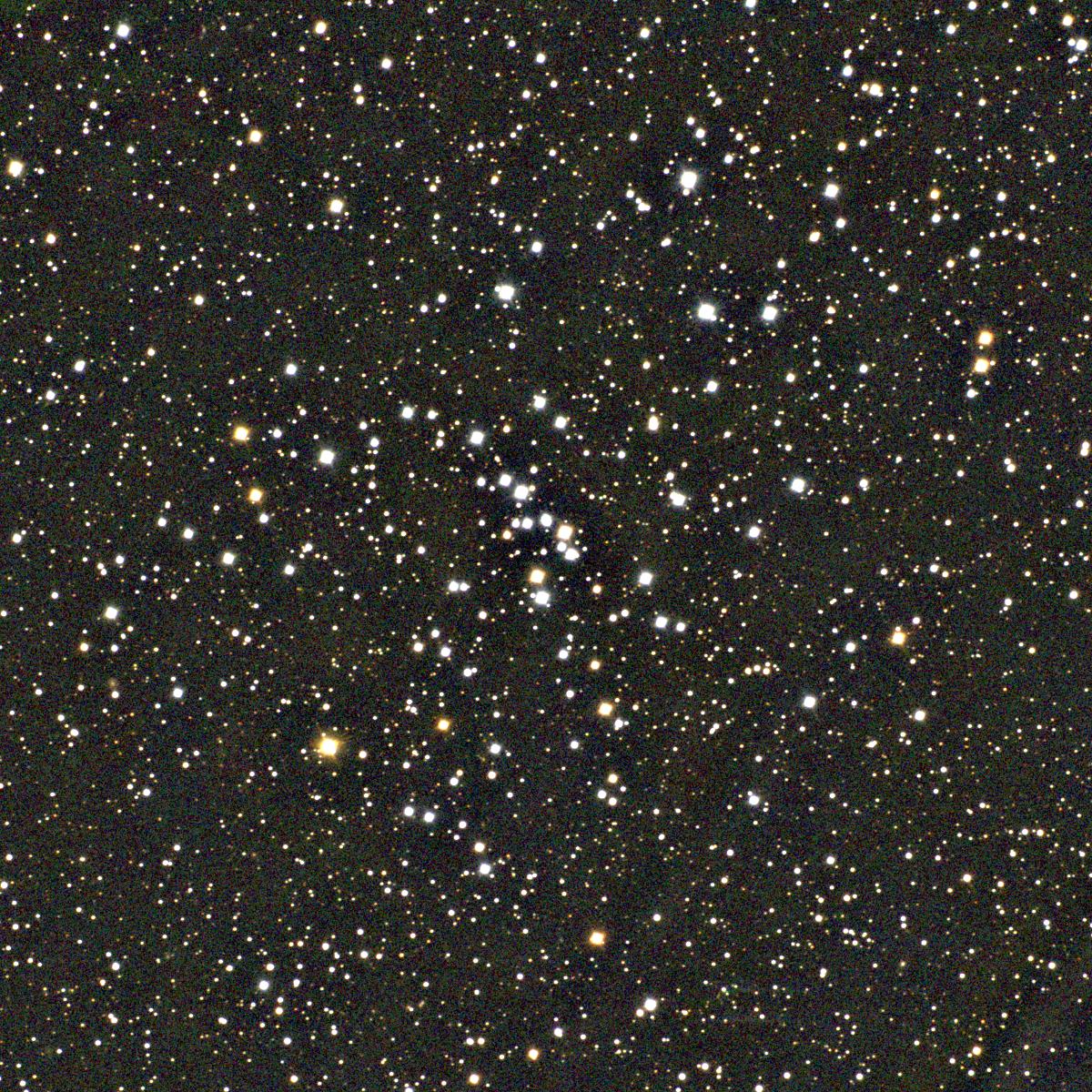

The Iadi
The Iadi, M48, are an open cluster of about forty stars gathered in a very large group, about 150 a.l; with the naked eye you can see about a dozen stars arranged in the characteristic V shape, near Aldebaran to form the face of the bull. Aldebaran is not part of the cluster, in fact it is almost halfway between the Earth and the Iadi.
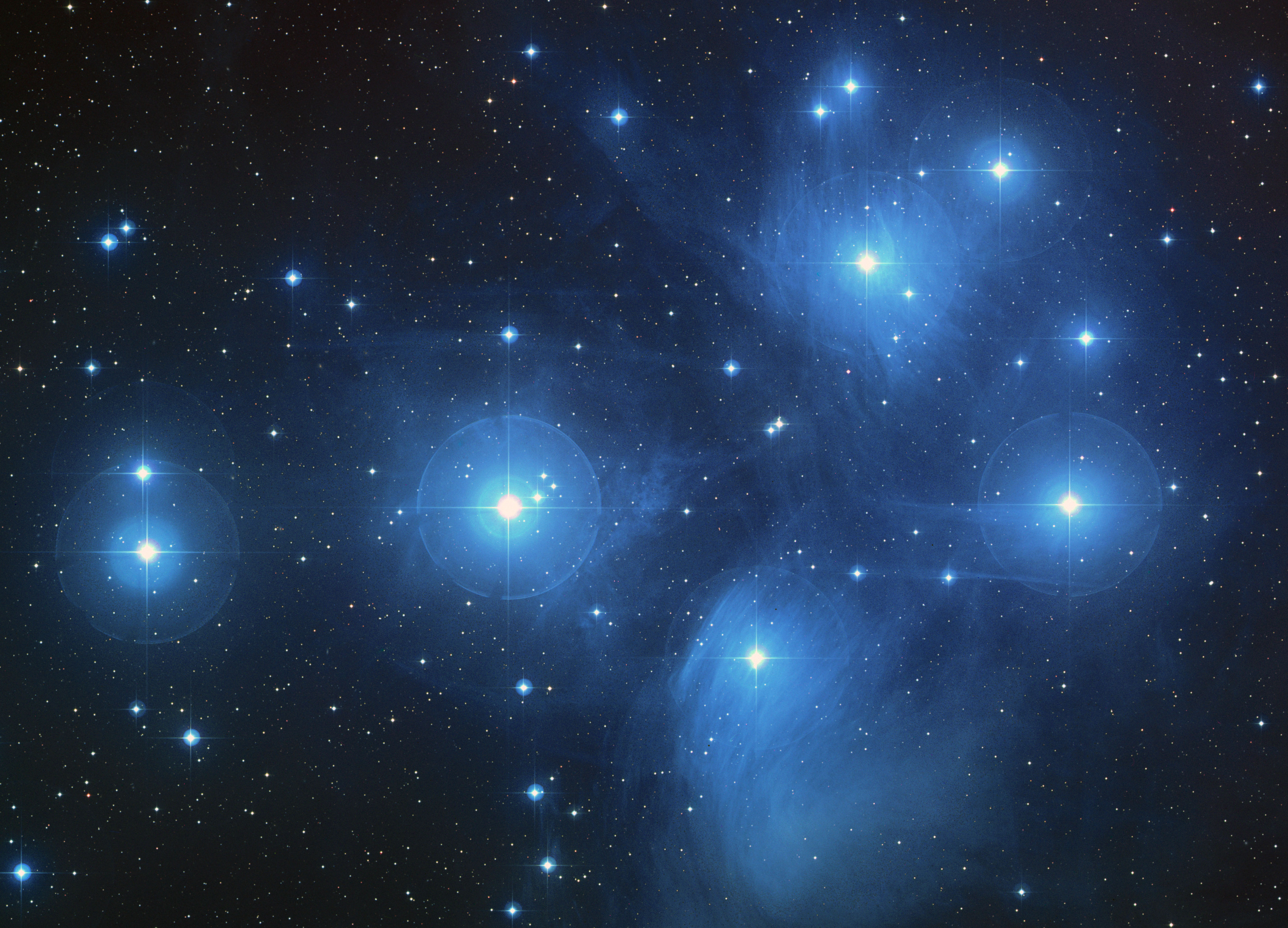
The Pleiades, M45, above the Bull, are another cluster of two hundred stars grouped in a narrower space: with the naked eye you can see at least six, the brightest of which is Alcyone, of magnitude 3. This cluster, considered the most beautiful of the sky, it is about 400 al from us. Its stars are very young, 20 million years old, and are surrounded by a widespread nebulosity, residue of the cloud of gas and dust from which they were formed.

Near M1 Tauri is located M1, called Crab Nebula for the resemblance to the claws of a crab: it is what remains of the explosion of the supernova observed in 1054 AD. With small tools it looks like a faint nebulosity, while it shows itself in all its beauty in long exposure photographs.
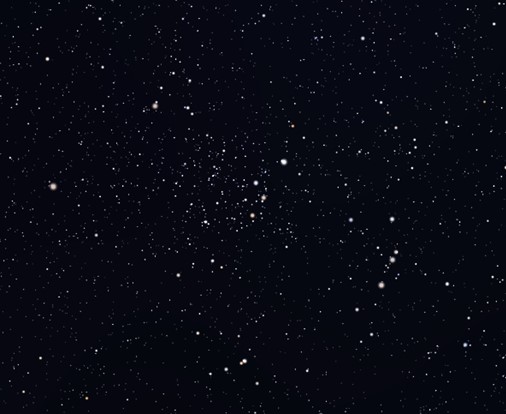
Above Aldebaran, to the east, NGC 1647 is an open 200-star cluster. About half way between Tauri and Aldebaran lie NGC 1907 and NGC 1817, a double cluster visible with a telescope; the first of about 20 stars starting from May 9th, the second, in NE of about 60 stars starting from May 11th. Observable with binoculars.
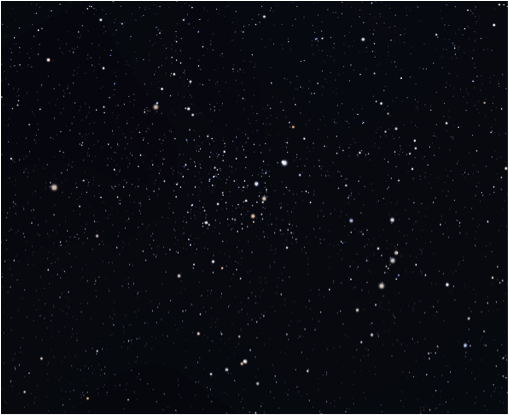
Mythology
In mythology, Taurus represents the animal under whose appearance Jupiter presented itself in the presence of Europe, the daughter of the king of Phenicia, whom he had fallen in love with. One day he saw the girl playing on the beach with her maidservants and, under the features of a beautiful white bull, appeared in the midst of them and she tenderly let herself be caressed. Confident Europe climbed on his back and at that point the bull entered the sea and swam quickly took off. Jupiter led Europe to Crete, where he revealed his true identity and lay with her. One of the sons was Minos, king of Crete who founded the palace of Knossos. To remember this love adventure, the king of the gods placed the bull among the stars.
The Iadi represent the nymphs who raised the newborn Dionysus feeding him with milk and honey.
The Pleiades are the seven daughters of Atlas and Pleione: Alcyone, Asterope, Celaeno, Electra, Maia, Merope, Taygeta. In reality, the stars easily visible to the naked eye are only six: Eratosthenes claims that the dimmer Pleiade is Merope, because she was the only one to marry a mortal and was ashamed of such a marriage. Astronomers did not follow this explanation, as the weaker Pleiade is Asterope.
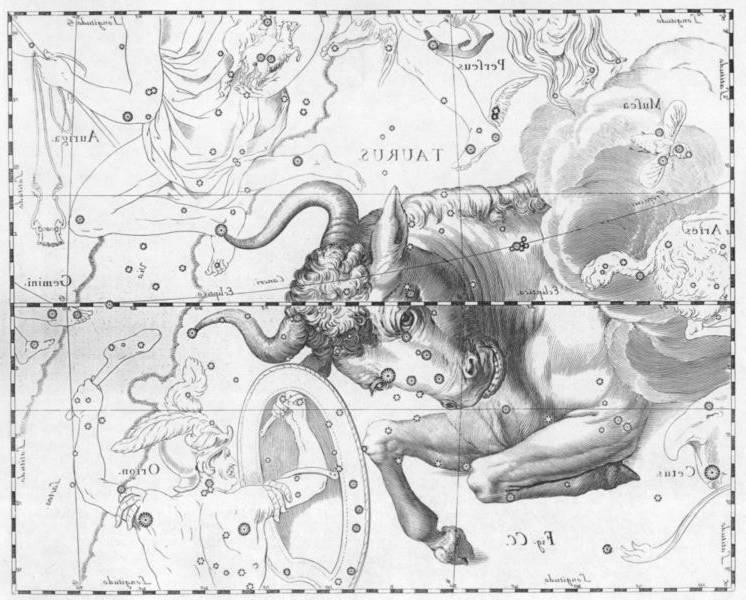
_______________________________________
The maps of the sky are taken from Skymap, software downloadable in demo version from the site http://www.skymap.com
Credits
Author: Lucia Corbo. As a Natural Sciences teacher and expert in didactics of Astronomy, she has collaborated with various magazines curating articles, columns, and multimedia materials. For the Italian Ministry of Education, she edited the cd “Students show the stars” and with N. Scarpel the book “Astronomy on the net”; she promoted and coordinated the first editions of Astronomy Weeks for schools. She has held multiple refresher courses on the didactics of Science and Astronomy and Astronomy courses for students and adults, both in presence and online.
Translation by Maria Antonietta Sessa

